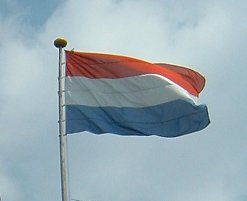
According to Wikipedia the melody of the Dutch national anthem, the ‘Wilhelmus’ (‘the William’) was borrowed from a well known Roman Catholic French song titled “Autre chanson de la ville de Chartres assiégée par le prince de Condé” (YouTube song), which made fun of the failed Siege of Chartres in 1568 by the Huguenot Prince de Condé during the French Wars of Religion. The Dutch Protestants basically took over an anti-Protestant song, slowed it down like pros, and adapted it for their own Protestant agenda. And stealing songs back then was all very rap battle like and cool.
However, nobody knows for certain who wrote it, but now there’s a computer trying to figure it out by analysing a huge body of text. So far Petrus Datheen (1531-1588) is the frontrunner and while we’re at it, it has yet to be determined where, when and why the anthem was written. The oldest version of the anthem was written in German in 1573 and the oldest surviving Dutch version is 1576.
Here’s a lovely rendition of the modern-day Wilhelmus with subtitles. The explanation in the video’s comments lets you find out even more about other unanswered questions surrounding the Dutch national anthem.
(Link: nemokennislink, Photo by Quistnix, licensed under Creative Commons Attribution 1.0)
